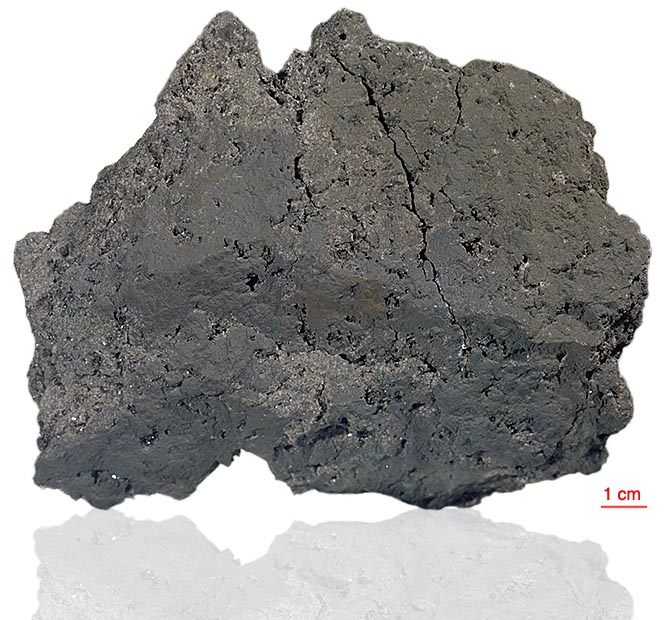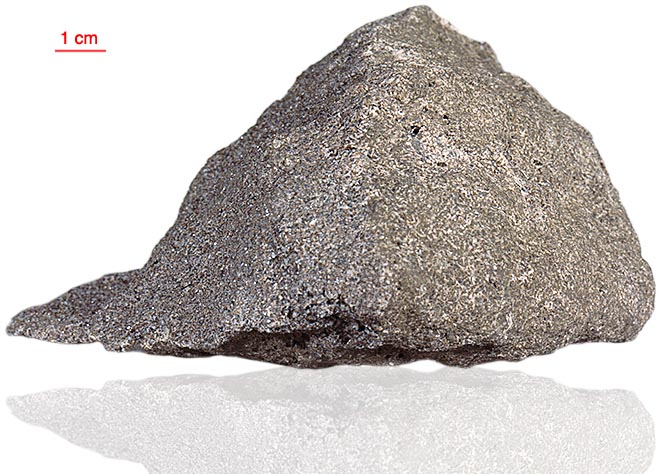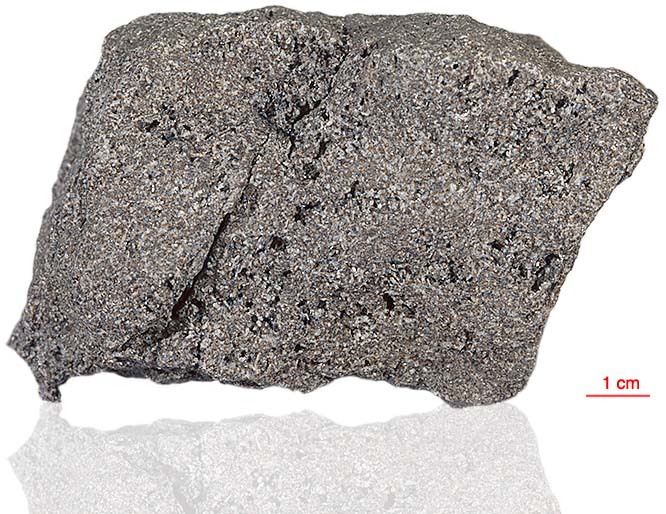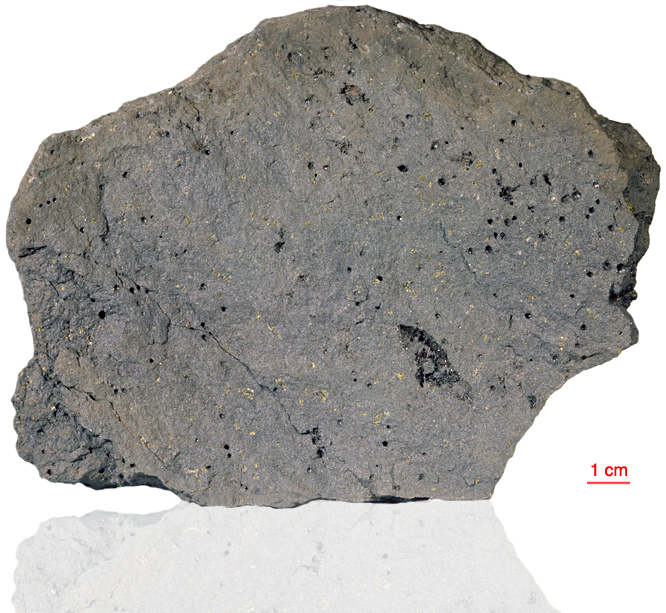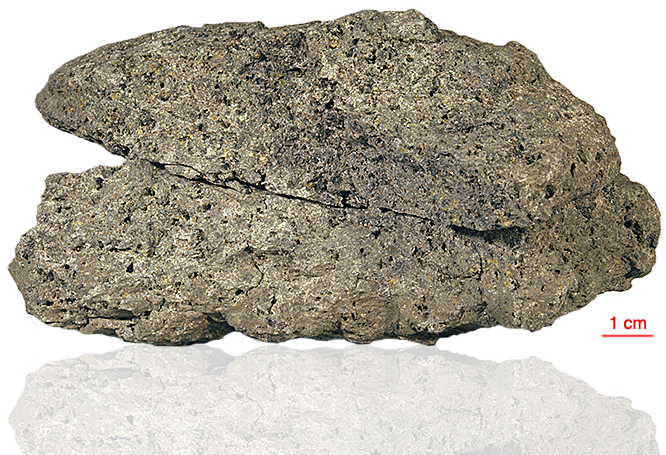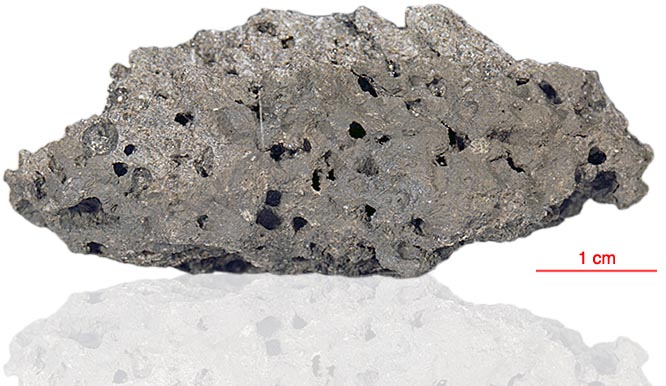
Fact sheet
71155 was chipped from a 0.5 m boulder from which 71135 was also collected. 71155 contains olivine and silica and has a granular texture with medium grain size. Skeletal plagioclase feldspar (rotation 2) and plumose pyroxene (rotation 1) are noteable features. 71155 is more vesicular and contains less ilmenite compared to 71135.
The sample weighed 26.15 grams before analysis and has not been dated.
Further details of this and other Apollo samples are here: http://curator.jsc.nasa.gov/lunar/
Apollo 17, the final manned landing mission, had two objectives: to obtain samples of ancient rocks from the lunar highlands and to look for evidence of younger volcanic activity on the valley floor.
This small Collection contains material deriving from both periods, including igneous rocks around 4.3 billion years old from the lunar highlands as well as younger volcanic samples dating from about 3.6 billion years ago.
Apollo 17 was launched on 7 December 1972.

